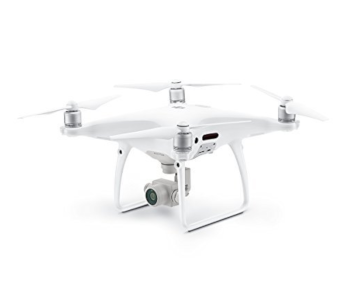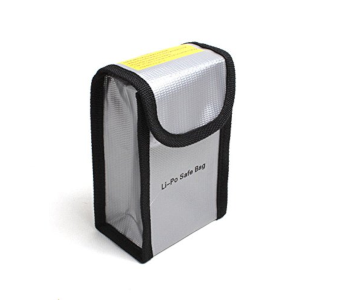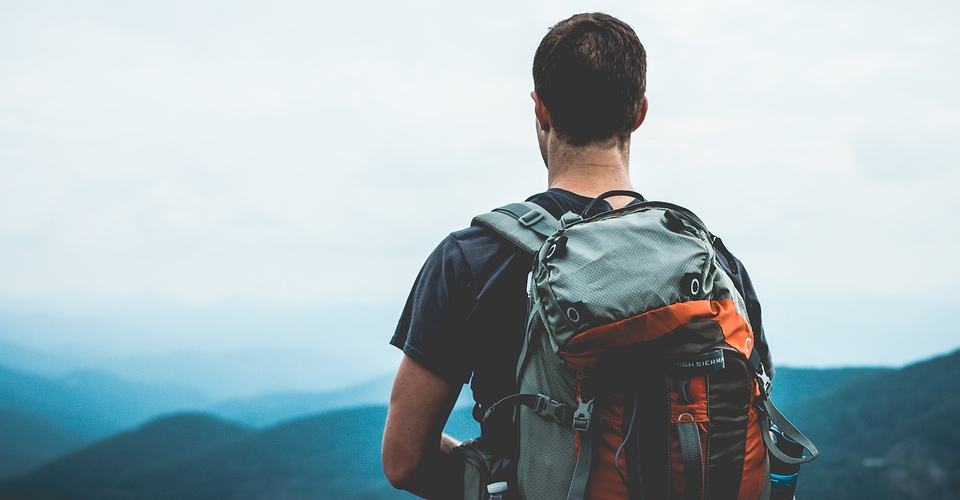Travel with the Phantom Drone – All You Need to Know
DJI’s Phantom 4 Pro is a versatile drone perfect for capturing unforgettable moments in high-quality video or DSLR-like photos. It’s not the most advanced model anymore, but the price to performance ratio makes the Phantom an excellent buy for intrepid explorers keen on a new perspective.
The prospect of filming sunsets over the Bahamas or the wide-open plains of Mongolia with the Phantom sounds terrific! How are you going to get it on the plane, though? What should and shouldn’t you do when using the drone abroad? What can you do to prepare? Get answers to these and other worthwhile travel-related questions in our detailed Phantom traveler’s guide!
Get acquainted with the local laws

Before anything else, you have to familiarize yourself with the drone policy of the state or country you plan on visiting. There are three broad categories of places when it comes to drone rules. The most common are countries that allow them under certain conditions. Then there are those where drones are banned, and those which have no drone rules at all.
You need to read up on a state or country’s specific drone laws, and the best place to start is this master list. However, there’s a standard set of rules you can follow anywhere. Always maintain a line of sight with the drone and never fly it close to uninvolved people or airports. Don’t interfere with other aircraft or emergency services, and never fly when you’re inebriated.
The situation isn’t as clear-cut when flying in countries with no drone rules. While you might get away with more risky maneuvers, your Phantom could also get confiscated on a whim. It’s best not to take it along to a country which prohibits the use of drones. It will be confiscated on arrival, and you might not even get it back when you leave.
Create a flight plan
Once you know where you’re going and what the local laws are, it’s time to create a flight plan. This fun and creative task will save you a lot of headaches when you arrive on location and ensure you’ll capture amazing videos. Research the local sights, seek advice from drone pilots who’ve been there before, and use a mapping program to plot a course. Save an offline version of a local map and your flight plan so you can use them without internet access.
You can’t fly drones in national parks or over landmarks in some countries. It’s best to factor that into your plan instead of wasting time when you’re already there.
Prepare for emergencies
There’s always a chance that something unexpected might happen no matter how skilled a drone pilot you are. You can avoid damage to your drone and nip severe problems in the bud by preparing in various ways.
The first thing you should do is familiarize yourself with the Phantom’s capabilities and controls. It’s a good idea to brush up on your skills before traveling even if you’ve flown it many times before.
Be sure to bring a repair kit! You can buy pre-built ones or create a repair kit of your own. It needs to include spare propellers and propeller guards as well as all the tools you’ll need to install them. Keep in mind that the screwdrivers can be classified as potentially harmful, so you’ll have to place the kit among your checked baggage.
Always bring spare batteries, especially if you won’t have reliable access to a power source. Make sure that your accommodations have power access so you can at least recharge the batteries at the end of the day.
Getting through airport security
Drones have transformed from a potentially dangerous oddity to a recognized tech gadget many tourists bring with them. You should have no trouble clearing the Phantom with the TSA, but there are a few things you need to be aware of when traveling with the drone for the first time.
Sometimes an X-ray of your backpack is enough to identify the contents as a drone. However, the agents handling your belongings may insist that you take its contents out for inspection, especially if you’re carrying spare batteries. You’ll likely be asked what the batteries are for and how you intend to use the drone. Being upfront and polite is the best way of getting the inspection over with quickly and painlessly.
Keep in mind that security isn’t as tight or as orderly in other countries. The luggage check might last longer if the officers aren’t familiar with drone technology or have to implement stringent laws. Account for potential delays checking the Phantom may cause when calculating when to head for the airport.
Transporting the batteries
You should always bring the Phantom’s battery and any spares with you inside a carry-on. Even though some airlines permit the transport of a LiPo battery inside a drone as part of your checked baggage, it’s easier and more secure not to do so. The main reason is that a plane’s cargo compartment is subject to abrupt changes in temperature and pressure. That can lead to the battery shorting out and causing a fire.
What’s the proper way of storing drone batteries?

You can secure the drone’s batteries in multiple ways. Leave spares in their original packaging If you’ve bought them for the trip and haven’t used them before. Remove in-use batteries from the Phantom and either put some tape over their contacts or place them inside tight-fitting plastic bags. It’s also a good idea to label the containers so that customs officers know what they contain and can clear the batteries faster.
The best precaution you can take for in-use batteries is to invest in a special carrying case. These inexpensive accessories are made from fire-resistant materials and prevent the batteries from combusting.
Whichever protection method you use, make sure that the batteries have no more than a 30-percent charge.
How many spare batteries can you bring?
That depends on the airlines’ guidelines. However, most airlines follow a rule that states you can take as many LiPo batteries rated at 100 watt-hours or less as you like. You’re limited to two batteries with 101 to 160 watt-hours, while ones with a higher rating aren’t allowed.
You determine a battery’s watt-hours by multiplying its capacity in ampere-hours with its voltage. For example, the Phantom 4 Pro’s battery has a capacity of 5,870 mAh or 5.87 Ah. Multiplying that with its voltage of 15.2 volts comes out to 89.2 watt-hours, which is well within the unlimited battery limit.
Transporting your drone
You have more freedom in choosing how to transport the Phantom since it can be declared as a carry-on or stored along with your check-in luggage. Where it will be placed depends on the guidelines and the type of bag you’re using.
Hard cases vs. backpacks

Both hard cases and backpacks designed for drone transport are viable options. Each has its pros & con you ought to be aware of before making a choice.
Hard cases offer the best protection for the Phantom. They’re lined with styrofoam which absorbs impact and protects the drone’s delicate components. Airlines are known to treat checked luggage roughly, so it’s the only viable option if their carry-on restrictions are too stringent.
On the other hand, cases are bulky and weigh much more than backpacks. That makes them a chore to lug around if you’re planning to go on hikes. Putting the Phantom with other checked baggage also means you have to transport batteries separately. Some airlines might allow you to treat the case as a carry-on, but that doesn’t mean you won’t be turned away at the gate if it doesn’t pass inspection.
Drone backpacks are smaller and lighter alternatives you’ll have no problem putting into the carry-on compartment. They don’t protect the drone as well as hard cases, but they have more room since there are no thick foam layers. This lets you store batteries, spare parts, and tools inside without making the backpack bulky or uncomfortable.
Backpacks are trickier to shop for because they come in different sizes & layouts and are made from a wide array of materials. Shoddy build quality can cause the backpack to leak or its zippers to get stuck, exposing your Phantom to the elements.
Getting ready for a shoot
Understandably, you can’t wait to have fun with your Phantom, but you need to do so safely and responsibly. Scouting out a location is an excellent place to start. It’s one thing to read about an amazing look-out point and experience getting to it first-hand. Visiting a location without your drone first will give you an idea of how hard it is to get to, which sights you want to capture, and whether there are any special restrictions to consider.
It’s also essential to catch the local weather forecast so you can avoid downpours or the Phantom doesn’t get thrown off course by strong winds. Pay attention to the outside temperature if you’re visiting a colder country. If it’s below freezing, the battery might stop responding, and the drone will crash!
How to behave on location
Apart from following drone laws, you’ll want to use some common sense and courtesy. Don’t intentionally frighten people with the drone. Also, try not to fly it too close to wildlife as animals are terrified by the buzzing sound.
If the locals ask about the drone and want to watch, let them as long as they’re respectful. People in remote parts of the world may not know what a drone is and will be curious to see how the Phantom behaves. Interacting with them is a chance to show off your piloting skills and to make friends along the way.
That being said, you should also know when to call it quits. Fly the drone in a way that doesn’t make people uncomfortable and pack it up if you’re asked to leave. Besides, a long continuous shot from the same angle isn’t as exciting as a succession of shorter ones from different points of view. The best thing to do is to get the shots you came for as quickly as possible and leave playing with the drone for open fields and uninhabited areas.
Getting the most from your visit
Time management is crucial, especially if you’re following an itinerary which includes activities unrelated to drones. Your best bet is to structure your trip in a way that lets you experience the place you’re visiting from the ground and the air.
It’s better to set aside more shorter periods for drone use than fewer longer ones. That way you’ll end up with recorded memories of more visited sights or capture the same place from various angles and at different times of the day. Keep in mind that setting the Phantom up and packing it back up takes time, so plan accordingly to not have to rush drone activities.
Most importantly, enjoy your stay and have the Phantom be part of the fun! Thanks to its advanced camera features, you can create effortless panorama shots or have it follow your adventures. Mix its automated functions with manual piloting to create a story worth showing.

